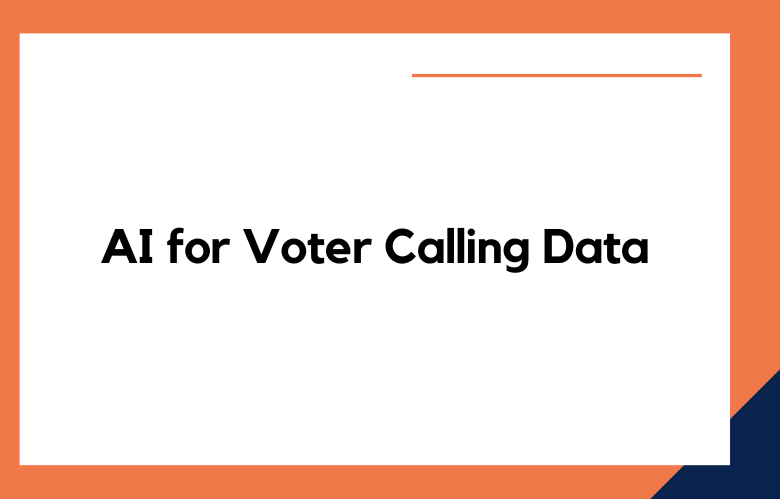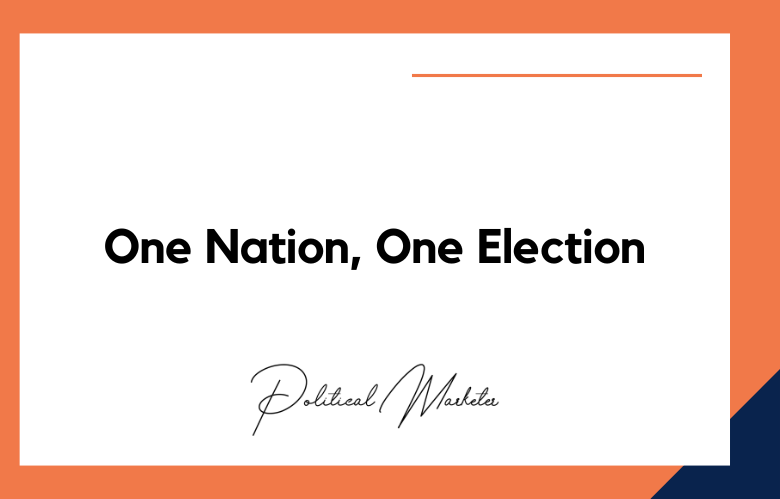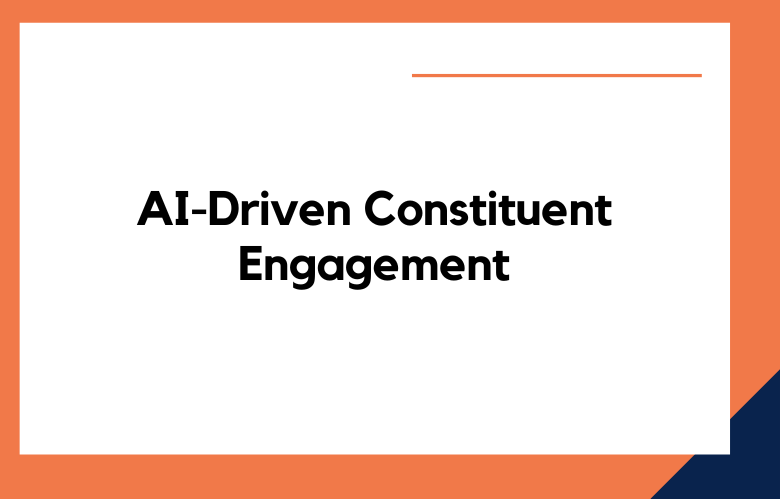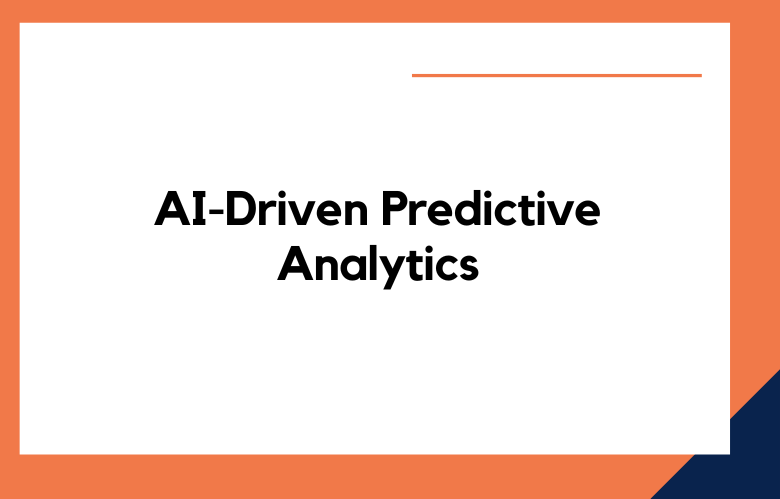The use of AI in analyzing voter calling data has revolutionized how political campaigns are run. By leveraging the power of machine learning algorithms, campaigns can gain valuable insights into voter behavior, preferences, and trends. In this article, we’ll explore how AI can be used to analyze voter calling data and the benefits it can bring to political campaigns.
How to Use AI for Analyzing Voter Calling Data
Analyzing voter calling data can be time-consuming and complex, but artificial intelligence (AI) can help make it more efficient and effective. AI can help political campaigns analyze large amounts of voter calling data quickly and accurately, providing valuable insights into voter behavior and preferences.
What is Voter Calling Data?
Voter calling data refers to the information collected during phone calls made by political campaigns to voters. This data can include information on voter demographics, responses to survey questions, and call outcomes (e.g., whether the call was answered, went to voicemail, or resulted in a conversation). Voter calling data is a valuable source of information for political campaigns, as it provides direct feedback from voters and can help shape campaign strategy.
How AI Can Analyze Voter Calling Data
AI can analyze voter calling data in several ways:
Predictive Modeling
AI algorithms can be trained to identify patterns and trends in voter calling data and predict voter behavior. For example, AI can predict which voters are most likely to support a candidate or turn out to vote on election day.
Sentiment Analysis
AI can analyze voters’ language during phone calls to determine their sentiment toward a candidate or issue. This can help campaigns adjust their messaging and outreach strategies to better resonate with voters.
Call Outcome Analysis
AI can analyze call outcomes to identify successful calling strategies and optimize campaign resources. For example, AI can determine the best times of day to call voters or which phone numbers are most likely to result in a successful conversation.
Demographic Analysis
AI can analyze voter demographics to identify trends and tailor campaign messaging to specific groups. For example, AI can determine which issues are most important to young voters or which messaging is most effective with minority voters.
Benefits of Using AI to Analyze Voter Calling Data
Using AI to analyze voter calling data can provide several benefits to political campaigns:
Improved Efficiency
AI can analyze large amounts of data quickly and accurately, allowing campaigns to make real-time data-driven decisions.
More significant Insights
AI can identify patterns and trends in data that may not be immediately apparent, providing campaigns with a deeper understanding of voter behavior.
Personalized Messaging
By analyzing voter data, AI can help campaigns tailor their messaging to specific groups and individuals, increasing the effectiveness of their outreach efforts.
Cost Savings
AI can help campaigns optimize their resources, reducing the need for costly and time-consuming manual data analysis.
Unleashing the Power of AI in Voter Calling Data Analysis
In today’s data-driven world, political campaigns increasingly turn to artificial intelligence (AI) to gain a competitive edge. One area where AI is making a significant impact is in the analysis of voter calling data. Voter calling data refers to information collected during phone calls made by political campaigns to voters, including demographics, responses to survey questions, and call outcomes. By leveraging the power of AI, campaigns can gain valuable insights from this data and optimize their strategies to win more votes.
Mastering the Art of AI-Driven Voter Outreach Analysis
In the fast-paced world of political campaigns, every advantage counts. One of the most potent tools campaigns can leverage is artificial intelligence (AI) to analyze voter outreach data. By harnessing AI, campaigns can gain valuable insights into voter behavior, optimize their outreach strategies, and ultimately win more votes.
In this article, we’ll explore the art of AI-driven voter outreach analysis and discuss how campaigns can use this technology to their advantage.
What is Voter Outreach Data?
Voter outreach data refers to information collected during a campaign’s efforts to reach voters, such as phone calls, door-to-door canvassing, email campaigns, and social media outreach. This data can include voter demographics, campaign messaging responses, and engagement levels.
How AI Can Analyze Voter Outreach Data
AI can analyze voter outreach data in several ways, including:
Predictive Modeling
AI algorithms can be trained to identify patterns and trends in voter outreach data and make predictions about voter behavior. For example, AI can predict which voters are most likely to respond positively to a campaign’s message or turn out to vote on election day.
Sentiment Analysis
AI can analyze the language voters use in response to campaign outreach to determine their sentiment towards a candidate or issue. This can help campaigns adjust their messaging and outreach strategies to better resonate with voters.
Engagement Analysis
AI can analyze voter engagement levels with campaign outreach efforts, such as email open rates or phone call response rates. This can help campaigns identify the most effective outreach methods and optimize their strategies accordingly.
Demographic Analysis
AI can analyze voter demographics to identify trends and tailor campaign messaging to specific groups. For example, AI can determine which issues are most important to young voters or which messaging is most effective with minority voters.
Cracking the Code: AI Tactics for Voter Calling Data Analysis
Voter calling data is a goldmine of information for political campaigns. By analyzing this data, campaigns can gain valuable insights into voter behavior and preferences, optimize their outreach strategies, and ultimately win more votes. However, analyzing this data can be daunting, especially for campaigns with limited resources. This is where artificial intelligence (AI) comes in.
In this article, we’ll explore how AI can be used to analyze voter calling data and provide practical tactics for campaigns looking to leverage this technology.
Revolutionizing Political Campaigns with AI Voter Data Analysis
Political campaigns are undergoing a revolution thanks to the power of artificial intelligence (AI). By harnessing AI’s ability to analyze large amounts of voter data quickly and accurately, campaigns can gain valuable insights into voter behavior and preferences, optimize their strategies, and ultimately win more votes.
In this article, we’ll explore how AI transforms political campaigns through its applications in voter data analysis.
Guide to Using AI for Voter Calling Data Analysis
In today’s data-driven world, political campaigns increasingly rely on artificial intelligence (AI) to analyze voter calling data and gain a competitive edge. Voter calling data, which includes voter demographics, responses to survey questions, and call outcomes, is a valuable source of information for campaigns looking to understand voter behavior and preferences.
In this guide, we’ll explore how AI can be used to analyze voter calling data, the benefits it can provide to political campaigns, and best practices for leveraging this technology effectively.
What is Voter Calling Data?
Voter calling data refers to the information collected during phone calls made by political campaigns to voters. This data can include demographic information about the voters, their responses to survey questions, and the outcomes of the calls (e.g., whether the call was answered, went to voicemail, or resulted in a conversation).
How AI Can Analyze Voter Calling Data
AI can analyze voter calling data in several ways, including:
Predictive Modeling
AI algorithms can be trained to identify patterns and trends in voter calling data and make predictions about voter behavior. For example, AI can predict which voters are most likely to support a candidate or turn out to vote on election day.
Sentiment Analysis
AI can analyze voters’ language during phone calls to determine their sentiment toward a candidate or issue. This can help campaigns adjust their messaging and outreach strategies to better resonate with voters.
Call Outcome Analysis
AI can analyze call outcomes to identify successful calling strategies and optimize campaign resources. For example, AI can determine the best times of day to call voters or which phone numbers are most likely to result in a successful conversation.
Benefits of using AI in Voter Calling Data Analysis
Using AI to analyze voter calling data can provide several benefits to political campaigns:
Improved Efficiency
AI can analyze large amounts of data quickly and accurately, allowing campaigns to make real-time data-driven decisions.
More significant Insights
AI can identify patterns and trends in data that may not be immediately apparent, providing campaigns with a deeper understanding of voter behavior.
Personalized Messaging
By analyzing voter data, AI can help campaigns tailor their messaging to specific groups and individuals, increasing the effectiveness of their outreach efforts.
Cost Savings
AI can help campaigns optimize their resources, reducing the need for costly and time-consuming manual data analysis.
Best Practices for Leveraging AI in Voter Calling Data Analysis
To leverage AI effectively in voter calling data analysis, political campaigns should follow these best practices:
Choose the Right Tools
Select AI-powered analytics tools with predictive modeling, sentiment analysis, and call outcome analysis capabilities. Look for user-friendly, scalable, and customizable tools to meet your campaign’s unique needs.
Integrate AI into Your Calling Strategy
Use AI to inform your calling strategy, including the best times to call voters, the most effective calling scripts, and the optimal number of call attempts. Continuously monitor and adjust your plan based on the insights provided by AI.
Train Your Team
Ensure your campaign staff is trained to use AI tools effectively and understands the value of data-driven decision-making. Provide ongoing training and support to help your team leverage AI to its full potential.
Prioritize Data Privacy and Security
Voter data must be protected. Ensure your AI tools and data storage systems are secure and comply with all relevant data privacy regulations.
Monitor AI Performance
Monitor the performance of your AI-powered analytics tools regularly and adjust your strategy as needed. Look for trends in the data, such as changes in voter sentiment or call outcomes, and adjust your calling strategy accordingly.
Conclusion
AI can be a powerful tool for analyzing voter calling data and optimizing campaign strategies. By leveraging AI’s ability to process and analyze large amounts of data quickly and accurately, political campaigns can gain valuable insights into voter behavior, preferences, and concerns.
This can help campaigns tailor their messaging, target their outreach efforts more effectively, and ultimately win more votes. As AI technology evolves, its applications in political campaigns will only become more sophisticated and widespread. By staying up-to-date with the latest developments and best practices, political campaigns can stay ahead of the curve and maximize their chances of success.
Call: +91 9848321284
Email: [email protected]











